Highlights Nano
Topological photonics with ZnO (2019)
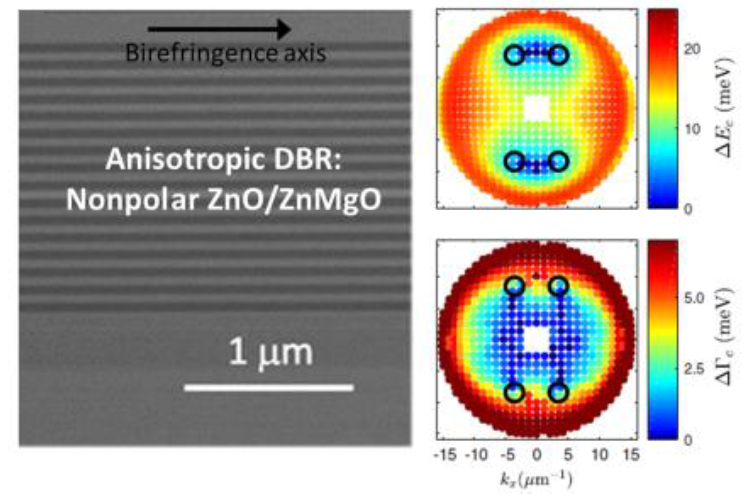 Voigt points represent propagation directions in anisotropic crystals
along which optical modes degenerate, leading to a single circularly
polarized eigenmode.
Voigt points represent propagation directions in anisotropic crystals
along which optical modes degenerate, leading to a single circularly
polarized eigenmode.By employing an appropriately-designed dielectric, anisotropic optical microcavity based on nonpolar ZnO/ZnMgO Bragg reflectors, we have been able to implement a non-Hermitian system and mimic thereby the behavior of Voigt points in natural crystals.
Read more...
Epitaxial growth of Fe3O4 on ZnO nanostructures (2019)
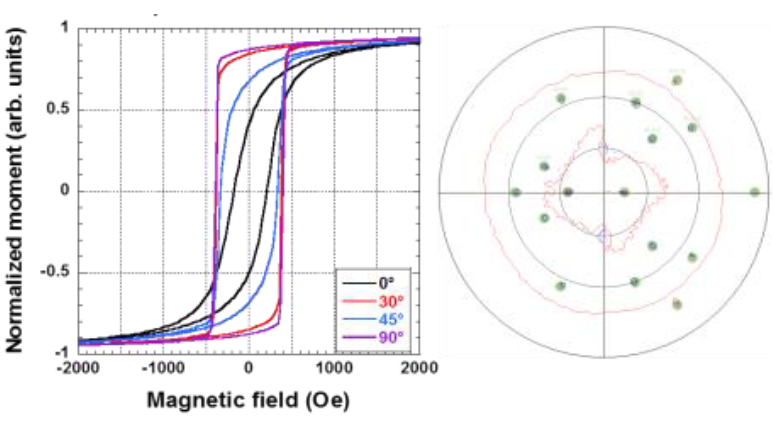 There is currently a worldwide effort to integrate semiconductors
and magnetic materials, as an efficient spin injection and detection
of spin in semiconductors is essential to the field of spintronics,
but remains an unsolved issue.
There is currently a worldwide effort to integrate semiconductors
and magnetic materials, as an efficient spin injection and detection
of spin in semiconductors is essential to the field of spintronics,
but remains an unsolved issue.The research project “SPINOXIDE” aims at taking advantage of both ZnO compatibility for the epitaxy of highly spin-polarized oxide ferromagnets and the potentially exceptional spin coherence lengths and spin lifetimes in ZnO nanostructures.
Read more...
Vectorial Holography (2019)
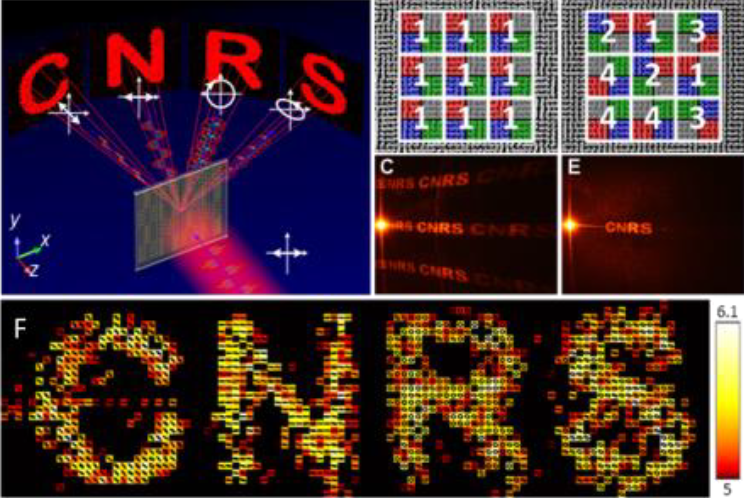 Polarization reconstruction, which is based on the superposition of
two orthogonal polarization bases, has been widely used in optical
science. Circular polarization (CP), respectively linear polarization
(LP), can be generated based on the superposition of two orthogonal
LP, respectively CP.
Polarization reconstruction, which is based on the superposition of
two orthogonal polarization bases, has been widely used in optical
science. Circular polarization (CP), respectively linear polarization
(LP), can be generated based on the superposition of two orthogonal
LP, respectively CP.However, full-polarization reconstruction cannot be obtained based on such phase-only difference be-tween two orthogonal ba-ses and its application to arbitrary wavefront control have not been realized.
Read more...
Metasurface integrated Vertical Cavity Surface Emitting Lasers (2019)
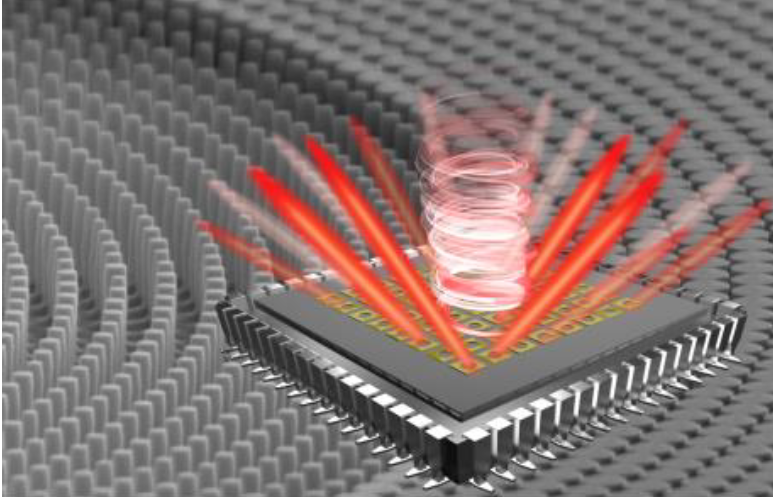 Vertical-cavity surface-emitting laser (VCSEL) has experienced a soaring
development over the last 30 years and become one of the most versatile
laser sources for a large number of applications.
Vertical-cavity surface-emitting laser (VCSEL) has experienced a soaring
development over the last 30 years and become one of the most versatile
laser sources for a large number of applications.The exploding development of modern optoelectronic technologies places stringent requirements for lower power consumption devices with high efficiency and more compact integrated system. However, due to the narrow aperture of the laser, their emission is generally highly divergent, spreading the signal after only few hundreds of microns from the laser source.
Read more...
Polariton lasing competition (2018)
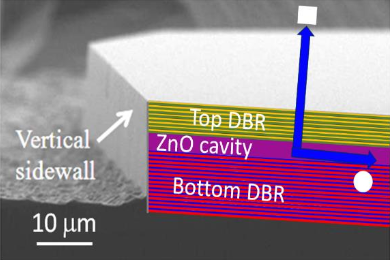 Polaritons are the quasiparticles resulting from the strong coupling
between a confined photonic mode and an excitonic resonance. Since
their observation in 1992, most studies have been carried out in vertical
microcavities, which are usually fabricated by introducing an active
region between two Bragg mirrors.
Polaritons are the quasiparticles resulting from the strong coupling
between a confined photonic mode and an excitonic resonance. Since
their observation in 1992, most studies have been carried out in vertical
microcavities, which are usually fabricated by introducing an active
region between two Bragg mirrors.Read more...
Hybrid-metasurfaces (2018)
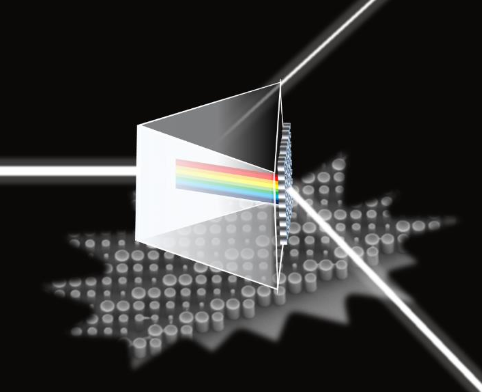 Metasurfaces control various properties of light via scattering across
a large number of subwavelength-spaced nanostructures. Wavelength-dependent
diffraction and resonant scattering effects usually limit their working
operation wavelengths. In refractive optics, chromatic dispersion
is a significant problem and is generally treated by cascading multiple
lenses into achromatic doublets, triplets, and so on.
Metasurfaces control various properties of light via scattering across
a large number of subwavelength-spaced nanostructures. Wavelength-dependent
diffraction and resonant scattering effects usually limit their working
operation wavelengths. In refractive optics, chromatic dispersion
is a significant problem and is generally treated by cascading multiple
lenses into achromatic doublets, triplets, and so on. Read more...
Optical phase transition in semiconductor quantum metamaterials (2018)
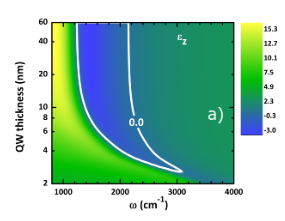 The direction of refracted light at an interface between two media
generally follows the conventional Snell-Descartes law. Bystacking
subwavelength-thick metallic and dielectric layers to form metamaterials,
it is possible to realize unexpected behavior such as negative refraction.
The direction of refracted light at an interface between two media
generally follows the conventional Snell-Descartes law. Bystacking
subwavelength-thick metallic and dielectric layers to form metamaterials,
it is possible to realize unexpected behavior such as negative refraction.
En savoir plus (en)...


